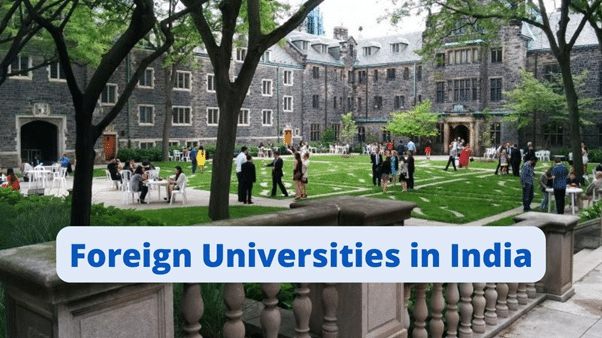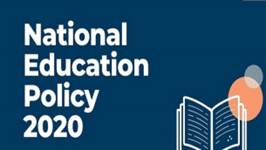To open the campus
Push to attract foreign universities should be coupled with a liberal work visa regime
Relevance
- GS Paper 2 Government policies and interventions for development in various sectors and issues arising out of their design and implementation.
- Tags: #NEP2020 #foreignuniversities #education #India #currentaffairs #upsc
Why in the News?
UGC released draft guidelines to regulate the entry and operation of foreign higher educational institutions (FHEIs) in the country.
The National Education Policy (NEP) of 2020 set a new course for India’s higher education sector, placing internationalization at its core. This visionary policy strives to enhance the quality of Indian university education by revamping curricula, fostering diverse campuses, promoting foreign faculty, researchers, and facilitating joint degrees between Indian and foreign institutions.
A Diverse Landscape
- India, with its 54,000 colleges and institutions, caters to a staggering 38.5 million college-level students.
- While this educational ecosystem is a mixed bag in terms of quality, it falls short in attracting foreign students. Despite the burgeoning private university sector, India struggles to draw international learners.
Closing the Gap: Work Visa for Foreign Graduates
- One significant hurdle is the absence of provisions for foreign students to gain work experience in India post-graduation.
- Many foreign students seek this opportunity, especially in India’s vibrant corporate and start-up sector. Addressing this concern necessitates an amendment to India’s “S” Visa, which is designated for students.
Building a Cultural Bridge
- In a globalized world, Indian companies aspire to become multinationals. To do so, they require employees with hands-on experience in India.
- Such individuals not only comprehend the country’s culture, business etiquette but also understand its regulatory landscape and markets.
- By recruiting foreign talent from Indian campuses and hiring Indian alumni who have studied abroad and return to their home countries, Indian companies can create an ecosystem of overseas talent well-acclimated to working in India. These individuals become a crucial “cultural bridge” between their home countries and India.
A Proven Model
- Indian alumni of US universities have played a pivotal role in strengthening the connections between Silicon Valley and Bengaluru. Likewise, they’ve helped the US administration understand India’s stance on various subjects.
- It is worth noting that the top three US tech giants, Google, Meta, and Microsoft, all have Indian alumni at their helm. Even former Afghan President Hamid Karzai, who studied in India, maintained warm bilateral relations through challenging times.
Expanding Student Work Visas
- Expanding the provision for student work visas can amplify these advantages. This expansion should encompass the 4,000 scholarships provided to foreigners coming to India under various schemes, including the Indian Council for Cultural Relations and Indian Technical and Economic Cooperation scholarships.
- For instance, African students studying at Indian institutions would significantly benefit from gaining field experience in India. Currently, India has 49,000 foreign students, with the Ministry of Education aspiring to reach 200,000 by 2023-24.
Addressing Concerns: Job Competition
- There is a concern that foreign students might displace Indian students in the job market.
- However, this is an unfounded fear. India’s population growth has fallen below the replacement rate, leading to an imminent aging population. To sustain growth, India must adapt, and offering post-study work visas can play a crucial role.
A Lesson from the World
- Countries like the US, UK, Australia, New Zealand, and Canada have successfully addressed similar demographic challenges by offering post-study student work visas.
- In contrast, European nations have relied on migration to fill the worker deficit, with resulting political implications. India can learn from these global experiences, potentially offering work status without extending to a resident visa.
Promoting Higher Education as an Export Sector
- Prime Minister Narendra Modi has recognized higher education as one of the champion export sectors, actively promoting Indian education overseas.
- Elite Indian institutions, including the IIMs and IITs, have expanded abroad, and private universities like Manipal, Sharda, and Amity have established campuses in various countries.
The Path Forward
- Amending India’s student visa regime starts with a notification by the Ministry of Home Affairs, permitting paid employment under the “S” category visa.
- The Ministry of Finance must determine the applicability of India’s tax laws to income earned by foreign students.
- The Ministry of Education, working through the UGC and the All India Council for Technical Education, should establish guidelines for on-campus recruitment of foreigners and define the role of the international students’ department in coordinating with the MHA, employers, and students.
- Furthermore, Indian multinational companies must actively advocate for this change, both directly and through business chambers.
In conclusion, to truly internationalize Indian education and capitalize on the potential of foreign students, it is imperative to liberalize the student visa regime. This can not only enrich the educational experience for international learners but also enhance India’s workforce and global standing.
| Key Highlights of the National Education Policy (NEP) 2020
Transforming School Education
Transforming Higher Education
Other Provisions
|
Sources: Indian Express
Mains Question
“To what extent can the liberalization of student visa regulations in India facilitate the internationalization of the country’s higher education sector, promote cultural exchange, and address demographic challenges while ensuring Indian students’ access to job opportunities?”





